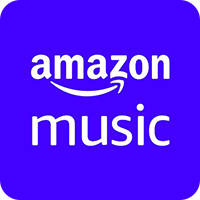Expertise

The reality is, brand loyalty is on the decline
A striking forecast from Forrester Research: Brand loyalty is expected to drop by 25 percent in 2025.1 While that number sounds dramatic, it signals a larger shift in consumer behavior—driven largely by Gen Z. Raised with endless options at their fingertips, Gen Z doesn’t give loyalty freely. It has to be earned—and re-earned—over time. Inflation and rising costs in essentials like groceries, education, insurance and housing, along with the looming impact of tariffs, have made this generation more price-sensitive and brand-fluid than ever.

Prioritize the customer experience
Customer experience is still one of the most powerful drivers of loyalty. And for this social-first, digital-native generation, that means intuitive, seamless experiences across every channel. Clunky checkouts and broken mobile experiences are instant deal-breakers. While a digital-first mindset is essential, human support still matters—especially when things go wrong. Resolving issues quickly and empathetically builds lasting trust. Creating a frictionless journey, both online and in-store, keeps Gen Z coming back. And brands that actively engage in real conversations about their products—not just push them—stand out.
Pro tip: Invite feedback—and act on it. Gen Z wants to be heard, not just sold to.

Demonstrate real value and back it up
Gen Z isn’t anti-brand—they’re anti-B.S. They buy from brands that offer quality, authenticity and alignment with their values. And while they may be value-conscious, they’re willing to spend their hard-earned dollars on premium products and experiences. This means that brands need to deliver the value proposition in a way that clearly communicates why it matters, without overhyping it. This is where influencer relationships—and user-generated content (UGC)—can help. The right creator can make a brand feel relatable, tell stories that people connect with and reach the right audience. And when brands amplify authentic content created by real customers, it adds a layer of credibility that’s hard to fake. Take prebiotic sodas like Ollipop and Poppi—they’ve tapped into Gen Z’s health-conscious mindset and used both influencer endorsements and UGC to hard-launch their brands into mainstream recognition.
Pro tip: Deliver stories, not sales pitches. Use social proof and UGC to show value through your customers’ eyes.

Build loyalty programs that reward loyalty
Gen Z grew up with loyalty programs—but a basic points card won’t cut it. When they share personal data, they expect something meaningful in return: personalized perks, real value and a reason to keep coming back. Today’s loyalty programs need to be mobile-first, intuitive and offer a mix of financial and experiential rewards. Starbucks Rewards is a standout example. Its app is seamless, point-earning is transparent, and the program layers in personalized touches that surprise and delight—think freebies, birthday rewards and gamified challenges that keep users engaged.
Pro tip: Your loyalty program should be more than a discount engine—it should be a natural extension of your brand story. Make it feel like something worth belonging to.

Future-proofing loyalty
Brand loyalty isn’t dead, but it’s evolving, especially for Gen Z consumers. This generation has high expectations, shorter attention spans and endless options—but they’re also highly loyal when a brand gets it right. If brands want to win the trust of Gen Z, it comes down to a few things: a smooth and intuitive customer experience, the offer of real and authentic value, and loyalty programs that are worthy of their time. Gen Z can tell when you’re paying attention, and when you're just talking. Future-proofing your brand starts with building around what matters most to them.
SOURCE: 1Predictions 2025: Retail. Forrester Research, Inc. October 22, 2024.
















